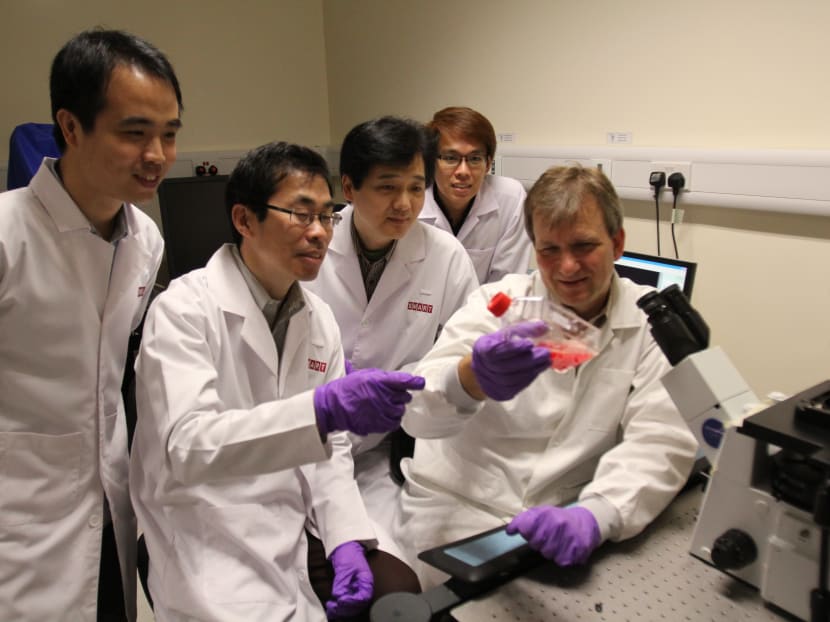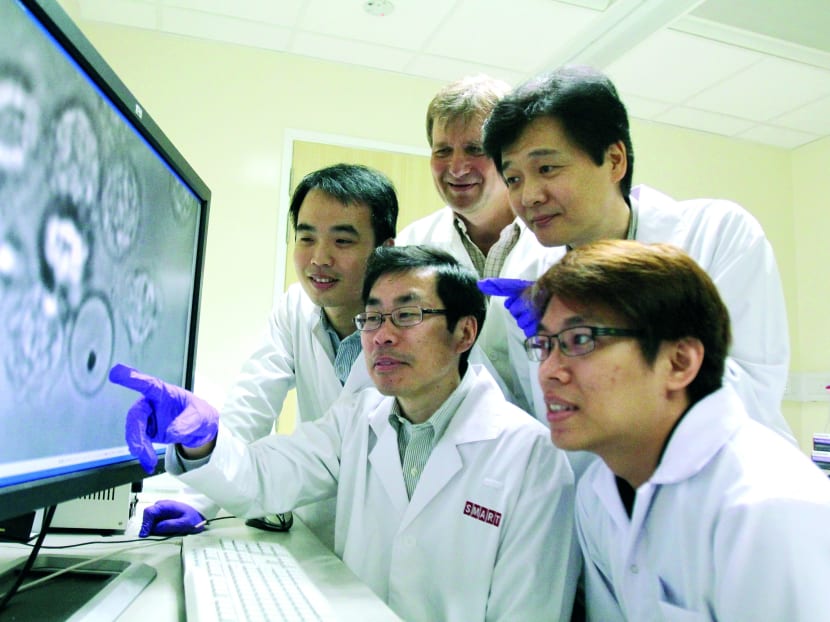In breakthrough, scientists develop humanised mouse model for malaria research
SINGAPORE — A team of scientists in Singapore has taken a step forward in the global fight against malaria with the development of a new type of mouse that has both the human immune system and human red blood cells (RBC).


SINGAPORE — A team of scientists in Singapore has taken a step forward in the global fight against malaria with the development of a new type of mouse that has both the human immune system and human red blood cells (RBC).
This allows the mouse’s immune system to react to human malaria — which only infects human red blood cells — and is expected to accelerate the search for a new malaria treatment or even a vaccine.
This is the first animal model that has a human immune system that can be infected by human strains of malaria, said the research team.
Malaria is a mosquito-borne parasite that causes fever and headaches, and in severe cases, can result in coma or death. About 219 million people were infected with malaria in 2010 and the disease kills about 860,000 people globally each year.
A World Health Organization report said last month that half of the world’s population — 3.3 billion — is at risk of malaria. The disease can be found in tropical and subtropical regions including South-east Asia, in countries such as Malaysia, Thailand and Indonesia.
The mouse model was a culmination of more than three years of work between the Singapore-MIT Alliance for Research and Technology (SMART), the Nanyang Technological University (NTU) and SingHealth KK Women’s & Children’s Hospital, as well as researchers from multiple disciplines, such as molecular biology, immunology and engineering.
“The significance of the work is that for the first time, we have a small animal model which supports a robust parasite infection in the presence of a human immune system,” said Professor Chen Jianzhu, the Ivan R Cottrell Professor of Immunology at MIT and SMART lead principal investigator of the Infectious Diseases Interdisciplinary Research Group. “No one has built this sort of system before. With this ability, this becomes a good model to test vaccines.”
The development of the humanised mouse model for malaria infection has already led to a discovery: How the human immune system controls malaria infection. The team has discovered the two molecules, LFA-1 and DNAM-1, that are present in natural killer (NK) cells. NK cells are involved in the immune response and these cells adhere to infected RBCs through the molecules. Adhesion, if it happens, can take hours, but once it happens, the infected RBC will break open within minutes.
“Now these molecules can be a target for intervention,” said Prof Chen. “If you are developing drugs to enhance NK cells’ recognition of infected RBCs, then you can potentially help to clear the parasite much faster.”
Discovering how to enhance the immune response is one of the possible ways to tackle malaria. Prof Chen extrapolates that with NK cells, the infection can be cleared 10 times faster.
“The key thing is that ultimately a therapy like this would possibly be seen as something that prevents people from dying,” said Prof Peter Preiser, Acting Chair of the School of Biological Sciences at NTU.
“When you think about malaria infections, 1 per cent of the people who get infected — roughly — die. It’s not just that they die in some underdeveloped country. Even in Singapore, Germany and England, people come back with malaria and they die despite top-level healthcare interventions.”
Funding for malaria research, compared to some other diseases, has not been forthcoming and it is hoped that the new mouse model will provide a cost-effective way for vaccine and drug development.
“There are a hundred times more funding going into HIV research globally than into malaria research, and if you look at cancer in comparison, it’s even higher,” said Prof Preiser. “Funding is always an issue.”
“At the moment, testing the malaria vaccine is extremely expensive because you need to do it eventually in humans, and so a clinical study to get a vaccine tested costs hundreds of millions of dollars,” adds Prof Preiser. “So if you can do a small animal test, it is a very good indicator that something works because it has the human immune system. You could imagine reducing the cost by orders of magnitude.”
Prof Preiser’s team in NTU had published their research last month that detailed a potential vaccine for malaria, after discovering a way to block the parasite from entering the red blood cell.
Media reports then said the discovery would result in a vaccine in five years. Saying that he had been misquoted in those reports, Prof Preiser clarified that his team hoped to test a vaccine in that time.
“I would hope that we have the candidates that should be put into a vaccine in the next three to four years,” he said. “And then it’s another five years before you have something to put into a human. People have been trying to develop a malaria vaccine for almost 50 years. I hope we are faster.”







